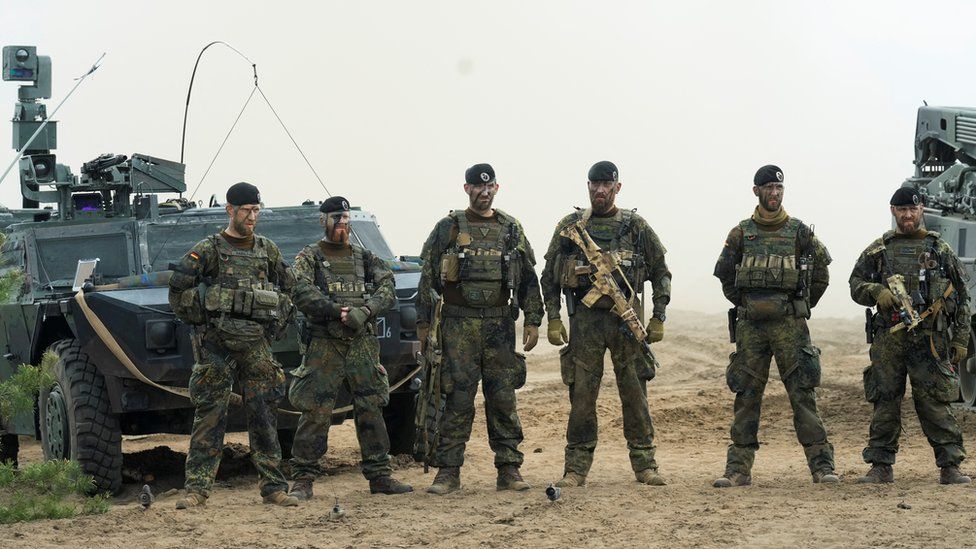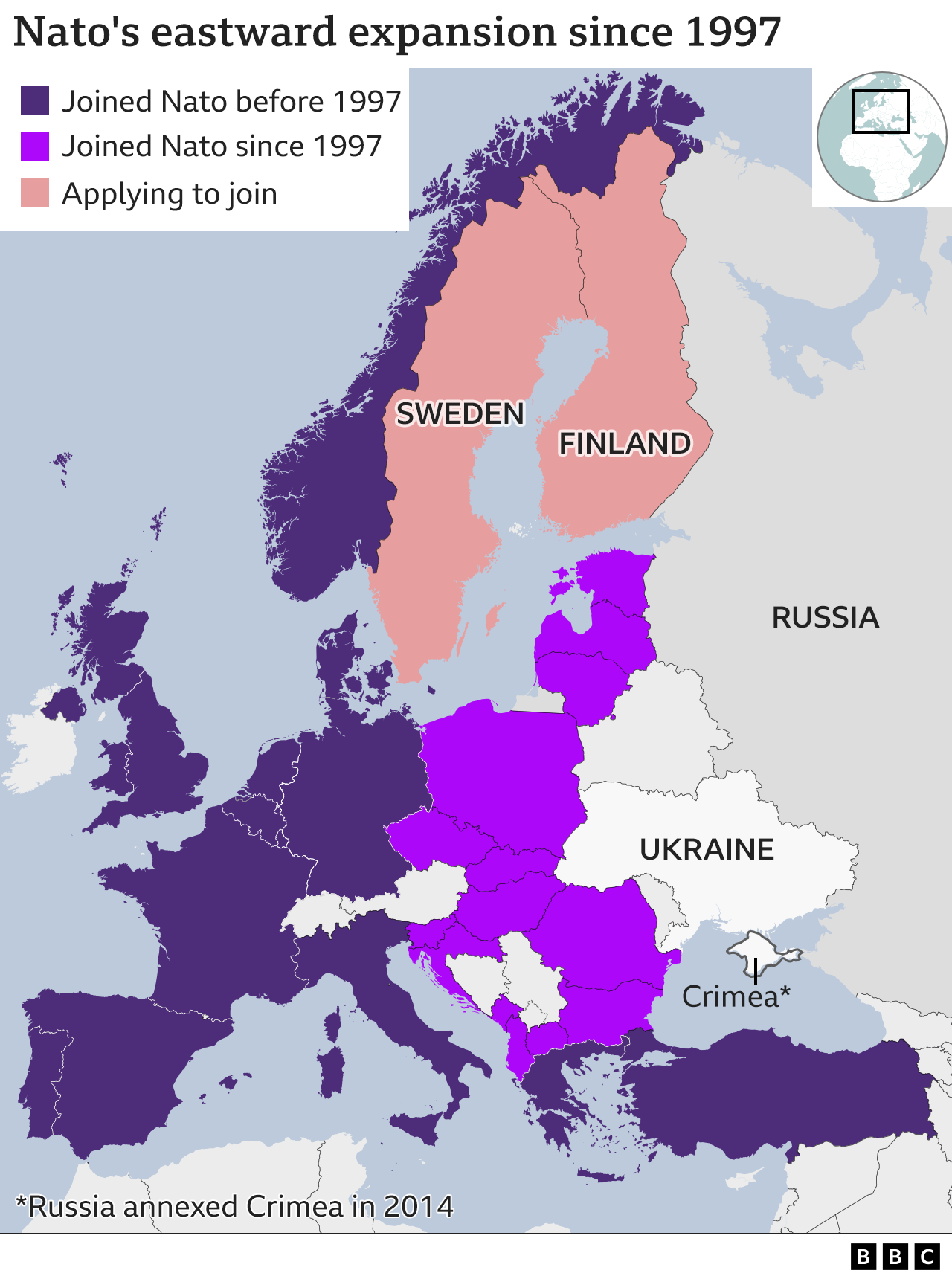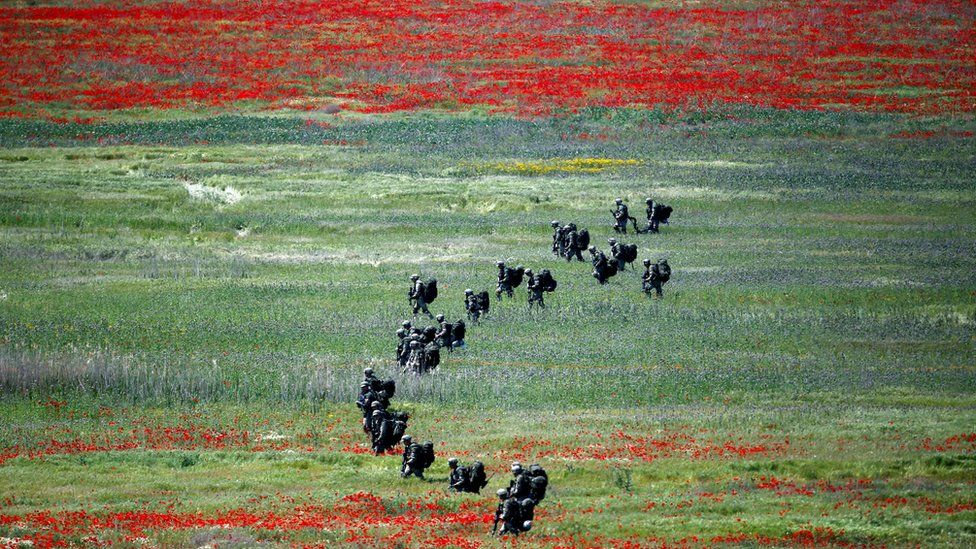Canadian Nato troops during a tactical practice in Latvia
The current week's Nato culmination in Madrid comes at a crucial time in the coalition's 73-year history. Russia's intrusion of Ukraine has been depicted as the greatest vital shock toward the West since the 9/11 assaults of 2001. Nato is the sole military partnership fit for shielding Europe from additional Russian hostility, however does it have a technique?
Under quite a while back, France's President Macron proclaimed Nato to be "mind dead". However from the second Russian tanks folded across the line into Ukraine, the Western reaction has been striking for its solidarity, speed and power. It has been revitalized with restored reason - fortifying lines and providing weapons.
Just before the highest point in Madrid, Nato Secretary General Jens Stoltenberg reported what he called "a basic change in the partnership's prevention and safeguard", fortifying its protections on its eastern lines and raising its quick reaction power to in excess of 300,000 soldiers.
The coalition faces various difficulties, from half breed fighting to the destabilization of the Balkans to digital assaults, the militarisation of room and what to do about China's developing military power. Interestingly, this Nato culmination will address what it calls "the difficulties that Beijing postures to our security, interests and values", Mr Stoltenberg said. Here are the absolute most major problems liable to be on the table this week.
What is Nato and how do nations join?
1. Staying away from acceleration in Ukraine war
Nato faces a difficult exercise. The world's most remarkable military coalition, containing 30 part states, three of them with atomic weapons (US, UK and France), doesn't have any desire to do battle with Russia. President Putin has more than once reminded the West he has a monstrous atomic munititions stockpile and, surprisingly, a low-level cross-line conflict could rapidly raise wild.
So the greatest test throughout the previous four months has been, and remains now, how to assist Ukraine with safeguarding itself against this ridiculous attack without getting brought into the battling itself.
getting drawn into the fighting itself.
Early Western inhibitions about not upsetting Moscow by sending heavy weapons to Kyiv have been swept aside as gruesome details of alleged Russian war crimes and atrocities have emerged, backed up by satellite data.
The Madrid summit will need to set out the extent of military help Nato countries can provide and for how much longer.
For now, Moscow is winning in the Donbas, the largely Russian-speaking region of eastern Ukraine, albeit at massive cost in lives and material damage. Expectations are Russia will try to hang on to these territorial gains, perhaps annexing them in the same way it did with Crimea in 2014.
In the absence of a peace treaty, Nato will face a new dilemma later. Does it continue to arm the Ukrainians as they try to claw back land Moscow now considers to be legally part of the Russian Federation? The Kremlin has indicated Western weapons striking Russian soil crosses a red line so the risks here of escalation would dramatically increase.
2. Maintaining unity over Ukraine
If Russia had only attacked the Donbas and not invaded the whole of Ukraine on three sides, then it is possible we would not have seen such extraordinary unity in the West's response. Six rounds of EU sanctions are seriously hurting Russia's economy and Germany has cancelled for now the multi-billion Nord Stream 2 pipeline that would have brought Russian gas to northern Germany.
But there are splits in the Western alliance over how far to punish Russia and how much pain Western economies can take. These will likely come to the surface in Madrid. Germany has been accused of dragging its feet over promised weapons deliveries while Hungary, led by a prime minister with close links to President Putin, has refused to stop buying Russian oil. At the other end of the spectrum those nations feeling most threatened by Moscow, namely Poland and the Baltic states, are pushing for the toughest line possible and more Nato reinforcements on their borders.
3. Securing the Baltics
This region has the potential to be a major flashpoint between Nato and Russia. This month Russia threatened "practical countermeasures" after Lithuania blocked some EU-sanctioned goods travelling across its territory en route to Russia's Baltic exclave of Kaliningrad.
Estonia's outspoken Prime Minister Kaja Kallas has lambasted Nato for being ill-prepared for a Russian cross-border invasion. The current strategy envisages trying to retake Estonian territory only after Russia has already invaded. "They could wipe us off the map," she says.
Estonia, Latvia and Lithuania were all once - involuntarily - part of the Soviet Union. Today, they are independent nations and all in Nato. There are four multinational battle groups stationed in these three countries, along with Poland, as part of what is called the Enhanced Forward Presence. The UK leads the one in Estonia, the US the one in Poland, Germany in Lithuania and Canada the one in Latvia.
Yet, Nato planners know all too well these battle groups would only be a tripwire against a future Russian invasion. They are too small to prevent a concerted incursion by a reconstituted Russian army. Baltic leaders now want at least a division of Nato forces stationed in each country as a serious deterrent. This is likely to be a hotly-debated topic in Madrid.
4. Allowing Finland and Sweden to join
Finland and Sweden, both seriously rattled by Russia's full-scale invasion of a sovereign nation, have decided they want to ditch their neutrality and join Nato. The alliance is welcoming them with open arms, but it is not quite that simple. Turkey, a member since 1952, has been blocking their addition on the grounds both these Nordic countries harbour Kurdish separatists who Turkey views as terrorists.
But because Finland and Sweden are so important to Nato, every effort will be made to find a way around Turkey's objections. Once they join, the Baltic Sea will effectively become a "Nato lake," bordered by eight member states, with eventually a joined-up air defence and integrated missile system.
Looking further afield, Nato will need to decide if it ever intends to admit new members such as Georgia and Moldova, with all the associated risks of provoking an already-paranoid Kremlin.
5. Urgent rise in defence spending
Currently, Nato members are obliged to spend 2% of their annual GDP on defence, but not all of them do. Recent figures from the Stockholm International Peace Research Institute (SIPRI) show while the US spent 3.5% on defence and Britain spent 2.2%, Germany only spent 1.3% while Italy, Canada, Spain and the Netherlands were all falling well short of the 2% target. Russia spent 4.1% of its GDP on defence.
When Donald Trump was US President, he famously threatened to take America out of the alliance if other member states did not pull their weight. This had some effect, but the Ukraine invasion has had more. Just three days after it began, Germany announced it would allocate an additional €100bn on defence and finally raise its quota above 2%. This week, the Nato chief announced that nine of the 30 member states have reached or exceeded the 2% target, while 19 have clear plans to reach it by 2024. The 2% figure, said Jens Stoltenberg, "should be a floor, not a ceiling".
Western military chiefs and analysts are unanimous in calling for an urgent increase in defence spending if Russia is to be deterred from further aggression. But successive defence cuts over recent decades have prompted questions over whether Nato still has sufficient mass to deter a future Russian incursion.
Although UK defence spending was recently boosted, there has also been massive waste in procurement. The current strength of the British Army is 82,000 troops including those in training, but after cuts this is due to fall to 72,500. More worryingly still, both Russia and China are ahead of the West in developing hypersonic missiles that can travel towards their target at more than five times the speed of sound and on an unpredictable flight path.
All of this comes at a time of drastic global price rises in food and fuel, hot on the heels of the pandemic, so budgets are already tight. Allocating yet more money for defence may prove unpopular domestically when there are so many other pressing demands on government spending.
But military chiefs warn that if Nato does not bolster its security now, then the cost of further Russian aggression in the future will be infinitely greater.












0 Comments